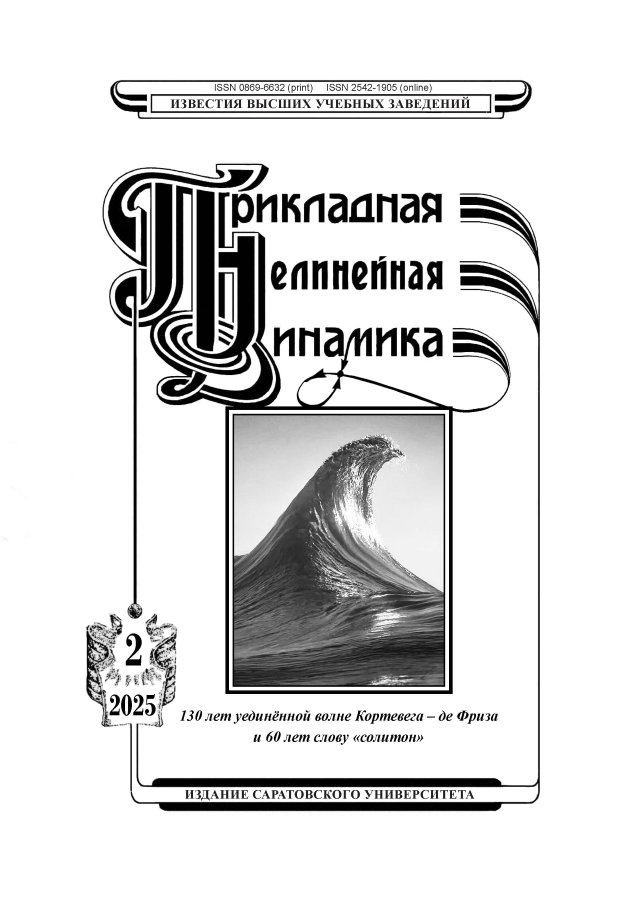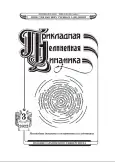«Метафора компьютера», межполушарная асимметрия и видовое (спонтанное) знание Homo sapiens
- Авторы: Александрова Н.Ш.1
-
Учреждения:
- Общество "Языковой мост" Берлин
- Выпуск: Том 30, № 3 (2022)
- Страницы: 358-372
- Раздел: Статьи
- URL: https://journals.rcsi.science/0869-6632/article/view/252086
- DOI: https://doi.org/10.18500/0869-6632-2022-30-3-358-372
- ID: 252086
Цитировать
Полный текст
Аннотация
Об авторах
Нина Шалваевна Александрова
Общество "Языковой мост" Берлин
ORCID iD: 0000-0002-8373-8259
Петтенкоферштрассе 16-18, 10247 Берлин,
Список литературы
- Анохин К. В. Когнитом: в поисках фундаментальной нейронаучной теории сознания // Журнал высшей нервной деятельности им. И.П. Павлова. 2021. Т. 71, № 1. С. 39-71. doi: 10.31857/S0044467721010032.
- Maffei R. Between instincts and reason: understanding a critical relationship [Electronic resource] // 2021. Academia Letters. Available from: https://www.academia.edu/51621276/Between_instincts_ and_reason_understanding_a_critical_relationship.
- Piccinini G. The first computational theory of mind and brain: A close look at McCulloch and Pitts’s “Logical Calculus of Ideas Immanent in Nervous Activity” // Synthese. 2004. Vol. 141, no. 2. P. 175-215. doi: 10.1023/B:SYNT.0000043018.52445.3e.
- Mi lkowski M. Why think that the brain is not a computer? // APA Newsletter. Philosophy and Computers. 2017. Vol. 16, no 2. P. 22-28.
- Mi lkowski M. Objections to computationalism: A survey // Roczniki Filozoficzne. 2018. Vol. 66, no 3. P. 57-75. doi: 10.18290/rf.2018.66.3-3.
- Piccinini G. Neurocognitive Mechanisms: Explaining Biological Cognition. Oxford: Oxford University Press, 2020. 416 p. doi: 10.1093/oso/9780198866282.001.0001.
- Niedenthal P. M., Barsalou L. W., Winkielman P., Krauth-Gruber S., Ric F. Embodiment in attitudes, social perception, and emotion // Personality and Social Psychology Review. 2005. Vol. 9, no. 3. P. 184-211. doi: 10.1207/s15327957pspr0903_1.
- Barsalou L. W. Grounded cognition // Annu. Rev. Psychol. 2008. Vol. 59. P. 617-645. doi: 10.1146/annurev.psych.59.103006.093639.
- Wilson R. A., Foglia L. Embodied cognition [Electronic resource] // In: Zalta E. N. (ed.) The Stanford Encyclopedia of Philosophy. Stanford: CSLI, Stanford University, 2016. Available from: https://plato.stanford.edu/archives/win2016/entries/embodied-cognition/.
- Adams F. Embodied cognition // Phenomenology and the Cognitive Sciences. 2010. Vol. 9, no. 4. P. 619-628 doi: 10.1007/s11097-010-9175-x.
- Fuchs T. Ecology of the Brain: The Phenomenology and Biology of the Embodied Mind. Oxford: Oxford University Press, 2017. 368 p. doi: 10.1093/med/9780199646883.001.0001.
- Фаликман М. В. Когнитивная наука в XXI веке: организм, социум, культура // Психологический журнал Международного университета природы, общества и человека «Дубна». 2012. № 3. C. 31-37.
- Broca P. Remarques sur le siege de la faculte du langage articule, suivies d’une observation d’aphemie (perte de la parole) // Bulletin et Memoires de la Societe Anatomique de Paris. 1861. Vol. 36. P. 330-357.
- Jackson J. Ambidexterity: Or Two-Handedness And Two-Brainedness, An Argument For Natural Development And Rational Education. London: Kegan Paul, 1905. 258 p.
- Джексон Дж. О природе двойственности мозга // Нейропсихология: Хрестоматия. 3-е изд. / Под ред. Е. Д. Хомской. СПб.: Питер, 2011. С. 162-164.
- Выготский Л. С. Психология и учение о локализации психических функций // Собрание сочинений: В 6 т. Т. 1. Вопросы теории и истории психологии. М.: Педагогика, 1982. С. 168-174.
- Лурия А. Р. Мозг человека и психические процессы. В 2 т. Т. 2. Нейропсихологический анализ сознательной деятельности. М.: Педагогика, 1970. 496 c.
- Доброхотова Т. А., Брагина Н. Н. Функциональная асимметрия и психопатология очаговых поражений мозга. М.: Медицина, 1977. 360 c.
- Симерницкая Э. Г. Нейропсихологический подход к изучению доминантности полушарий // Доминантность полушарий. М.: Издательство Московского университета, 1978. С. 49-68.
- Брагина Н. Н., Доброхотова Т. А. Функциональные асимметрии человека. М.: Медицина, 1981. 288 с.
- Котик Б. С. Межполушарное взаимодействие у человека. Ростов-на-Дону: Издательство Ростовского университета, 1992. 176 с.
- Хомская Е. Д. Об асимметрии блоков мозга // Нейропсихология сегодня / Под ред. Е. Д. Хомской. М.: Издательство Московского университета, 1995. С. 14-27.
- Визель Т. Г. О характере полушарных интеграций // Асимметрия. 2015. Т. 9, № 4. С. 39-47. doi: 10.18454/ASY.2015.34.735.
- Азарова Е. А., Котик-Фридгут Б. С. Межполушарное взаимодействие у человека. Учебное пособие. Ростов-на-Дону: Издательство Южного федерального университета, 2021. 158 с.
- Александрова Н.Ш. Зрительные агнозии и двойственность зрительного опознания // Труды VI Всероссийской конференции «Нелинейная динамика в когнитивных исследованиях - 2019». 23-27 сентября 2019, Нижний Новгород. Нижний Новгород: ИПФ РАН, 2019. С. 22-26.
- Александрова Н.Ш. Схематичный рисунок как когнитивный процесс и почему пациенты с лицевой агнозией не узнают лица // Первый Национальный конгресс по когнитивным исследованиям, искусственному интеллекту и нейроинформатике «IX международная конференция по когнитивной науке». Сборник научных трудов. В двух частях. Ч. 1. 10-16 октября, Москва, Россия. М.: НИЯУ МИФИ, 2021. С. 285-288.
- Sperry R. W. Some general aspects of interhemispheric integration // In: Mountcastle V. B. (ed.) Interhemispheric Relations and Cerebral Dominance. Baltimore: Johns Hopkins Press, 1962. P. 43-49.
- Zaidel E. Lexical organisation in right hemisphere // In: Buser P. A., Rougeul-Buser A. (eds.) Cerebral Correlates of Conscious Experience. Netherlands: Elsevier, 1978. P. 177-196.
- Jung-Beeman M., Bowden E. M., Haberman J., Frymiare J. L., Arambel-Liu S., Greenblatt R., Reber P. J., Kounios J. Neural activity when people solve verbal problems with insight // PLoS Biol. 2004. Vol. 2, no. 4. P. e97. doi: 10.1371/journal.pbio.0020097.
- McGilchrist I. The Master and His Emissary: The Divided Brain and the Making of the Western World. New Haven: Yale University Press, 2009. 608 p.
- Кок Е. П. Зрительные агнозии. Л.: Медицина, 1967. 224 с.
- Лурия А. Р. Предисловие // Симерницкая Э. Г. Доминантность полушарий. М.: Издательство Московского университета, 1978. С. 5-6.
- Выготский Л. С. Мышление и речь. М.-Л.: Государственное социально-экономическое издательство, 1934. 362 с.
- Alexandrova N. S., Antonets V. A., Kuzenkov O. A., Nuidel I. V., Shemagina O. V., Yakhno V. G. Bilingualism as an unstable state // In: Velichkovsky B. M., Balaban P. M., Ushakov V. L. (eds) Advances in Cognitive Research, Artificial Intelligence and Neuroinformatics. Intercognsci 2020. Vol. 1358 of Advances in Intelligent Systems and Computing. Cham: Springer, 2021. P. 359-367. doi: 10.1007/978-3-030-71637-0_41.
- Александрова Н.Ш., Александрова О. А. Импрессивная (сенсорная) алалия // Журнал неврологии и психиатрии им. С. С. Корсакова. 2016. Т. 116, № 11. С. 114-120. doi: 10.17116/jnevro201611611114-120.
- Dehaene S., Cohen L. Cultural recycling of cortical maps // Neuron. 2007. Vol. 56, no. 2. P. 384-398. doi: 10.1016/j.neuron.2007.10.004.
- Dundas E. M., Plaut D. C., Behrmann M. The joint development of hemispheric lateralization for words and faces // J. Exp. Psychol. Gen. 2013. Vol. 142, no. 2. P. 348-358. doi: 10.1037/a0029503.
- Castro-Caldas A., Reis A. Neurobiological substrates of illiteracy // The Neuroscientist. 2000. Vol. 6, no. 6. P. 475-482. doi: 10.1177/107385840000600610.
- Джексон Дж. Х. Избранные работы по афазии. СПб.: Нива, 1996. 72 с.
- Lenneberg E. H. Biologische Grundlagen der Sprache. Frankfurt am Main: Suhrkamp, 1972. 597 s.
- Скворцов И. А., Ермоленко Н. А. Развитие нервной системы у детей в норме и патологии. М.: МЕДпресс-информ, 2003. 368 с.
- Александрова Н.Ш. Обеспечение видоспецифических форм поведения - первоочередная цель пластичности мозга? // Труды конференции «Когнитивные исследования на современном этапе». 19-22 ноября 2018, Архангельск. Архангельск: САФУ, 2018. С. 14-17.
- Северцов А. Н. Эволюция и психика. М.: Издательство Сабашниковых, 1922. 54 с.
- Kahneman D. Thinking, Fast and Slow. New York: Farrar, Straus and Giroux, 2011. 499 p.
Дополнительные файлы










